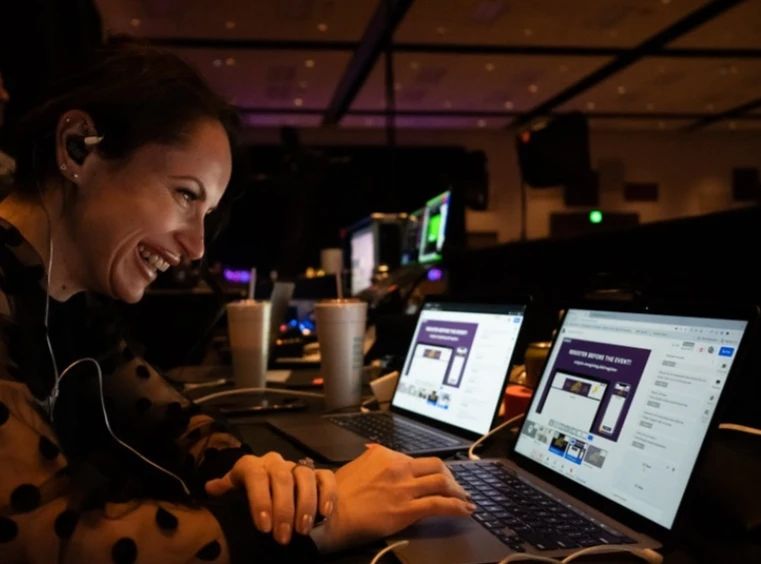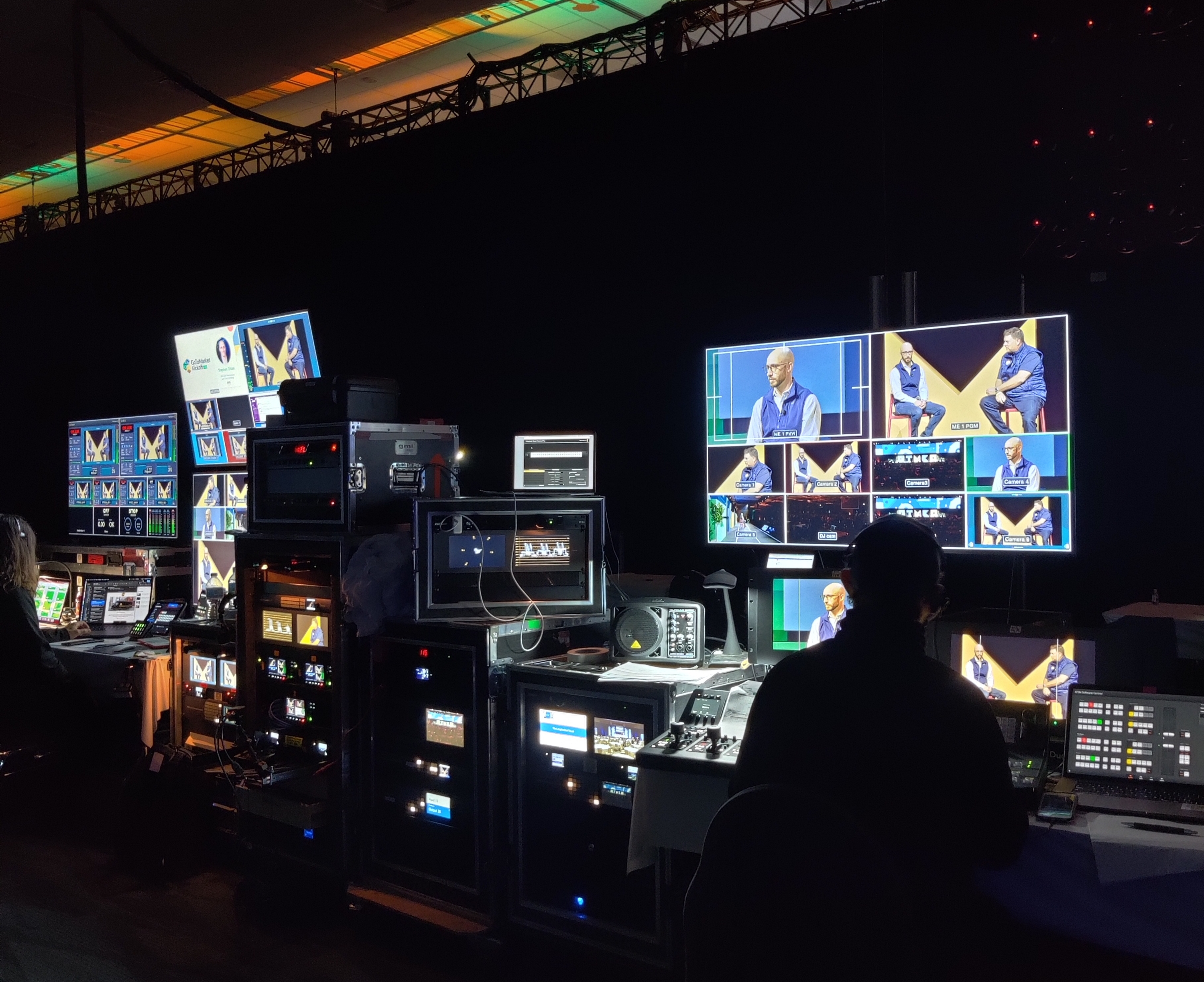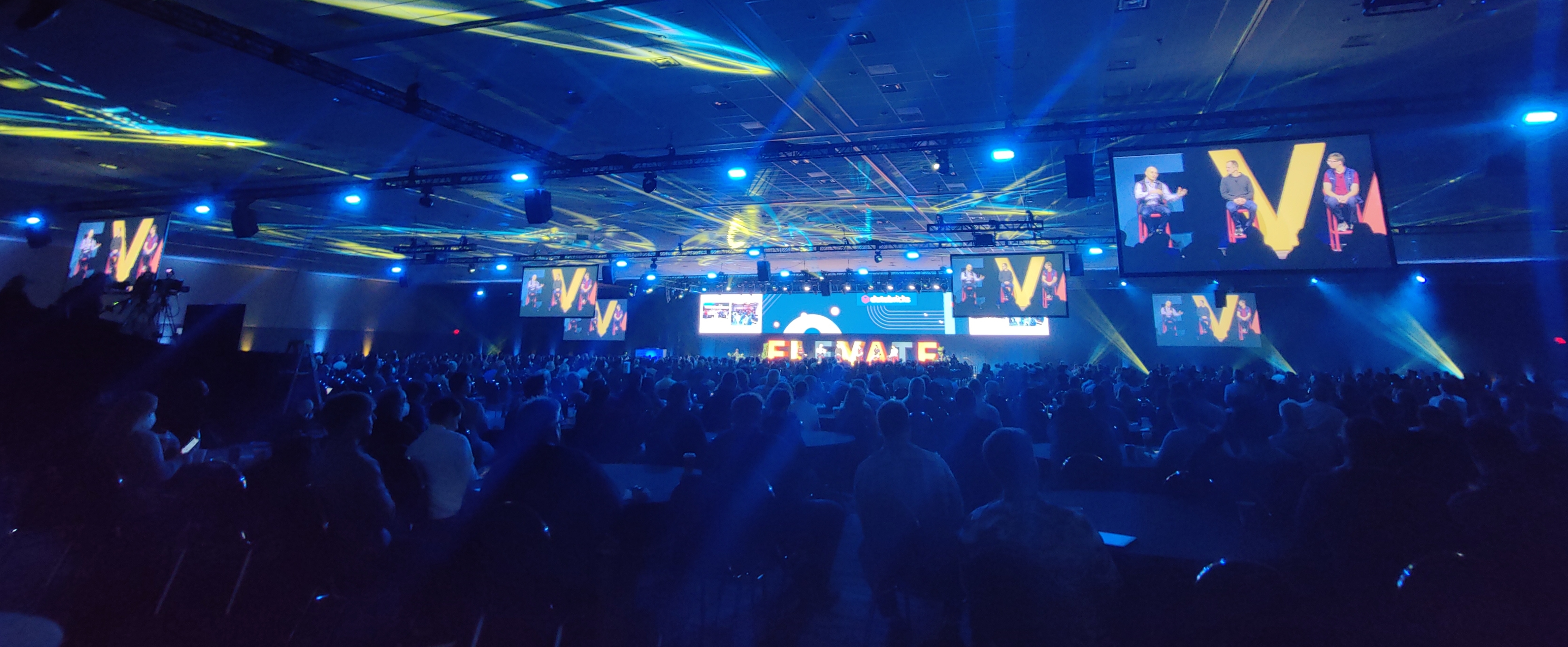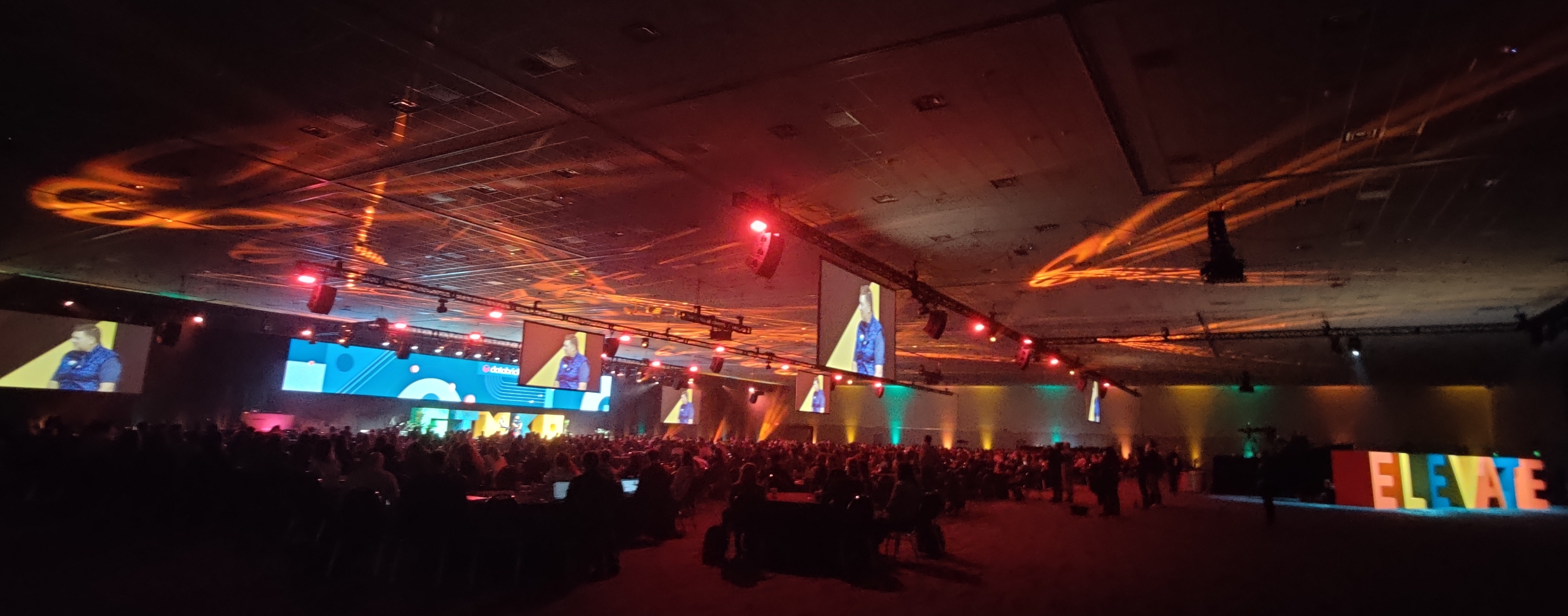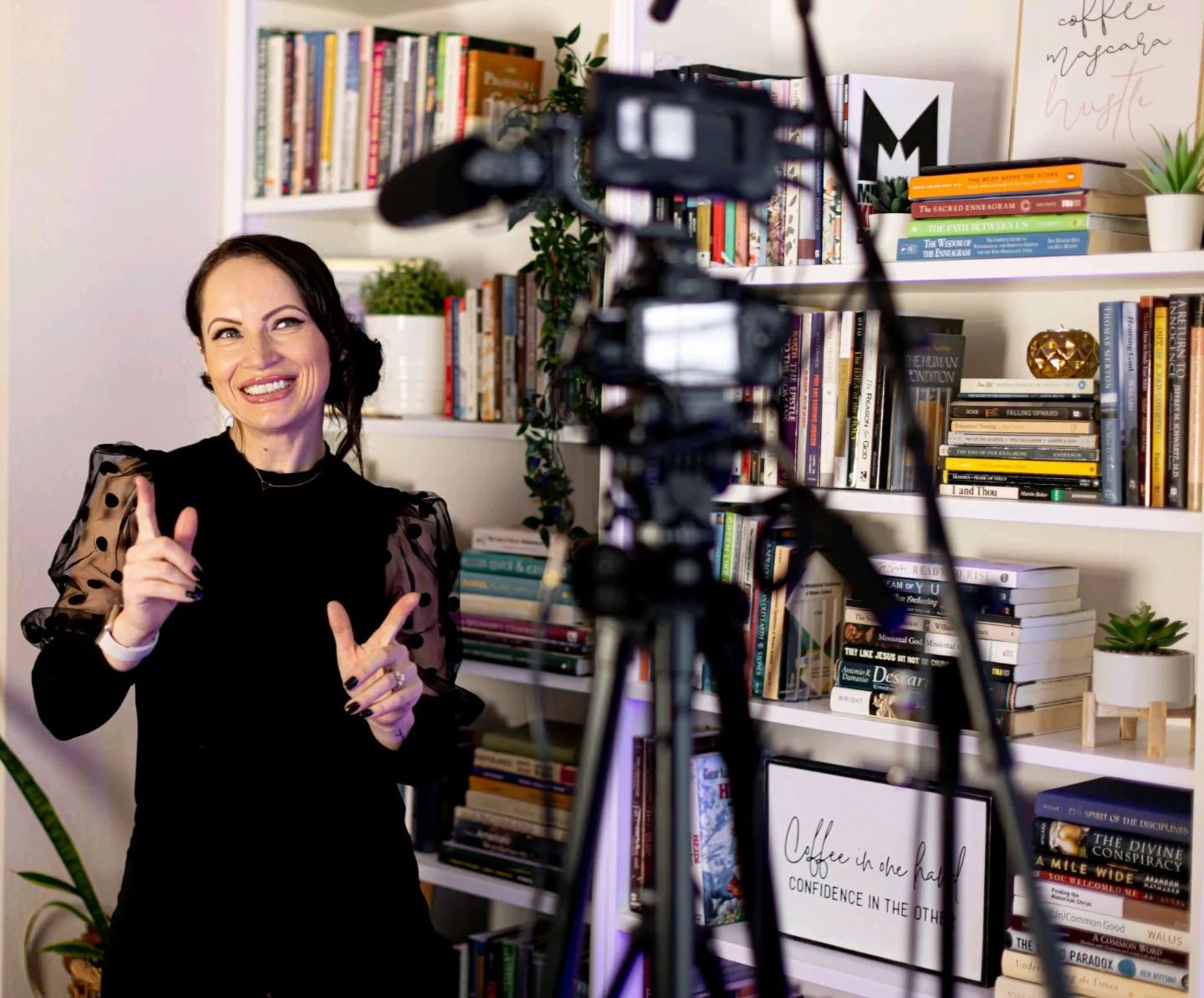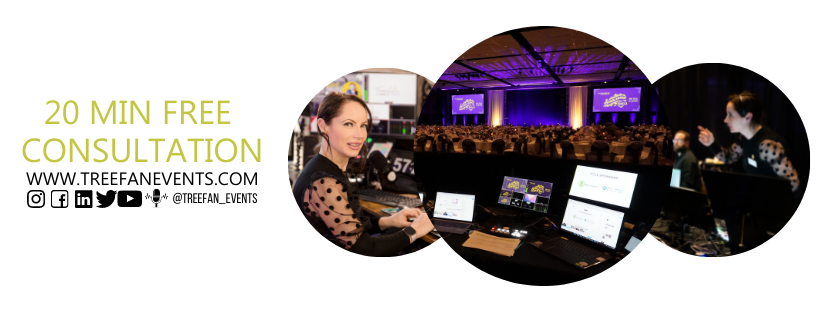If you’re an event professional, it’s no secret to you that the event landscape has gone through a radical transformation. Whether you’re excited about going back to the old normal or ready to embrace a new chapter in the event industry, you can’t ignore the rise in hybrid events. A large part of this comes down to the newfound flexibility the hybrid events offer. Planning a hybrid event can be tricky – especially with all the different formats available. Without the right considerations and tools, you’ll likely encounter recurring challenges in the process.
To help, Event Mender asked over 50 industry thought leaders to share their best advice for organizing a hybrid event that runs as smooth as butter, one of those event professionals being our Founder & CEO, Anca Trifan.
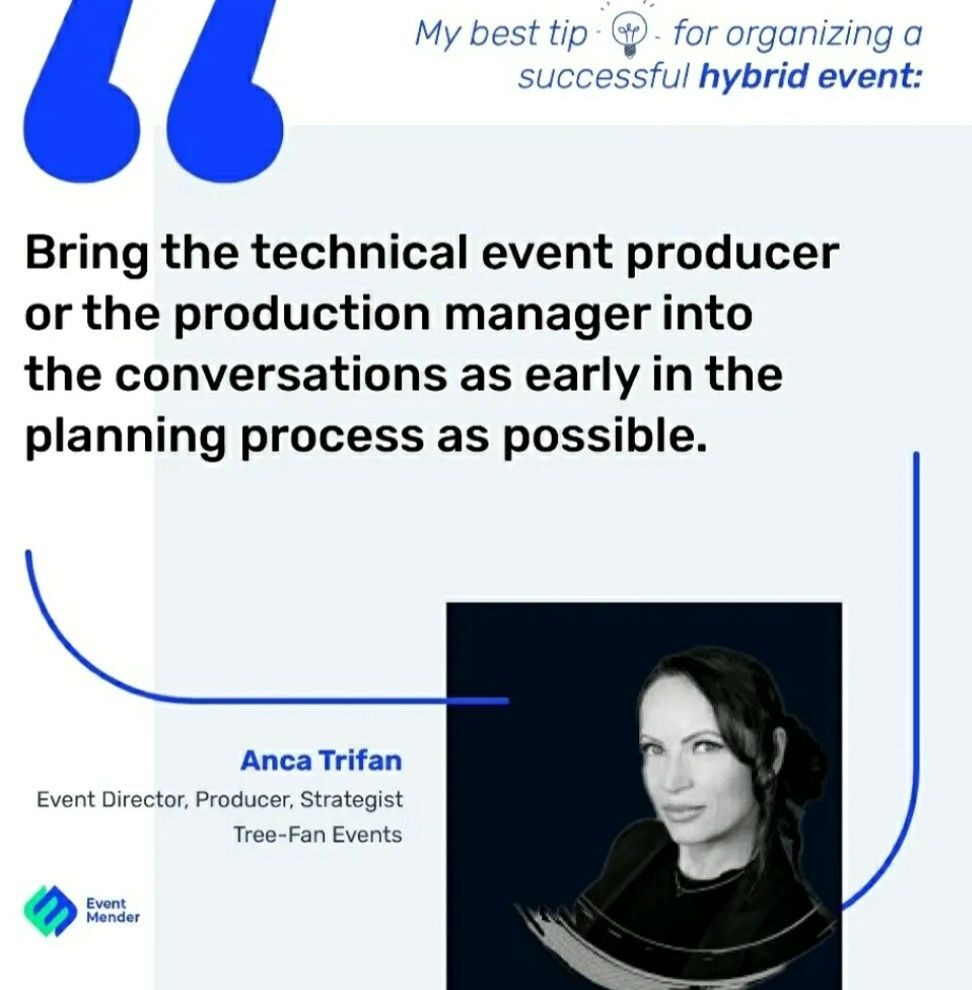
A few other tips worth taking note of:
Instead of going *back* to in-person events, we should be going *forward* to something new, more efficient, more sustainable. Hybrid is a divisive term and tends to make eventprofs think that it doesn’t apply to them. But it’s just a word. The concept is true. We should be running physical events with a tech-centric approach. It would be a detrimental error to run events like it’s 2009 again… In short, give your audience online access. Capture audience data on an online platform. Have a handy mobile app for onsite visitors. Provide your exhibitors with more data than they can handle. And all the while, you’ll be providing a better experience to your audience and reducing your carbon footprint. We need to build back better for tomorrow’s events industry. – Mia Masson
My top tip for organizing a successful hybrid event is that you first determine what “hybrid” means to you and your intended audience. Maybe even stop using the term “hybrid” and instead focus on getting a full understanding of what your audience needs, when they need it, and the best format to deliver it! – Tamar Beck
My #1 tip when it comes to having a successful hybrid event is to find your production team first. In hosting a hybrid event, you’re signing on to provide two different viewer experiences. A skilled production company will be able to help you navigate the waters of both the in-person and virtual shows. Bringing production in early means having help picking the event platform that will work best for the show you want to have, setting ticketing prices so both viewing experience production costs are covered, and getting tips like having the venue include internet in your event contract (which can be a huge budget saver). – Caitlin Shurilla
Speaker Preparation & Rehearsal — to achieve a gold standard rated presentation, track or keynote from your online and offline audiences, you’re going to need to put in the work before you pick up the mic. Remember… audiences are overloaded with the bombardment of content both professionally and personally. Ensure that your content is carefully curated to appeal to both sets of attendees, always keep this in mind. Practice it, test it out in advance, become comfortable with the tech arrangements, venue set-up and get feedback from the event producers before going live. Bottom line, nobody wants to go home with fools gold. Yes your audiences like things to be shiny and well polished but they’ll be the first ones to sense if you’re just digging up dirt. – Daniel Loman
Accept that you don’t know how this new world looks. Start simple and keep adding more online elements to your physical event (or the other way around). Utilize your target audience’s feedback and communicate in a transparent way that you’d like to learn, together with them, how hybrid elements can add the most value to your events. – Derrick Stomp
Not every component of your event needs to be hybrid. Figure out where it makes sense to incorporate hybrid experiences and interactions so they support a specific purpose and are used intentionally. It’s all about making the ‘bridges’ be of value for your attendees. – Sabrina Meyers
So to organise a hybrid event, you REALLY need to assemble a team of experts who know what they’re doing, how the tech works and how to bring everything together to create an experience/interaction. Having a broadcast of a live event doesn’t make an event hybrid. RECOGNISE that your event is going to evolve – even on the day – and that you need to flex with it. Be PREPARED to invest time, energy, effort and money on your hybrid event so you need to be ALL-IN. – Ruby Sweeney
With hybrid events, it’s more important than ever to have a skilled host who can help attendees navigate their event experience. As a professional host, this is not exclusively self-serving. Even if you’re not going to hire someone like me, I still strongly recommend you select someone internally who is comfortable and capable on-stage AND on-camera. With a multi-platform production, they need to: have the ability to clearly communicate the Agenda to keep people engaged; think on their feet to manage unexpected moments and challenges; and bring the in-person and digital audience together as a community whenever possible through their performance. – Adam Growe
With any event, we start with – who is it really for and what are the desired outcomes? And work backwards from there. I think it’s key to remember that hybrid events don’t have to happen at the same time when thinking about how the content should be delivered, and that as with any event, there are two main areas that can make or break for your attendees – broadcast quality and sensory engagement. Budget for your online guests to have just as good as an experience as those attending live – in terms of what and how they’re watching/engaging with content and in terms of them having something tangible, sustainable and memorable to engage with at the same time. – Jade Fletcher
Engaging the online audience is key since they are very easy to lose. To get some inspiration and how to brief your moderators and speakers, pay attention to the moderators in TV show. They always look into the camera, address the remote audience and give them more attention than the people in the studio. Make sure to take the questions from the in-person audience first due to the latency and when covering questions, say their names to make them really feel part of the experience. – Sina Bunte
1. Start with a digital first mentality to ensure the virtual isn’t an afterthought. 2. Start small. Focus on the goals and on what you do well and expand from there. Hybrid doesn’t have to be all or nothing. 3. Ensure the attendee journey is consistent, but it doesn’t have to be exact. Think of a sporting event. The live experience is designed a certain way and extended to the TV audience with a host supporting the experience. Hybrid no longer has to be 1:1. Design the agenda to ensure no attendee is left behind. – Mahoganey Jones
My one tip is to level the equality between virtual and hybrid attendees. Design great experiences for both. Stop putting them on separate platforms, put them on the same platform. Make your presenters address and call out the names of the virtual attendees who are chatting. And find ways to design it so in person attendees can meet virtual attendees. – Will Curran
Dont try to engage the online/offline audience with no reason. I don’t think you need to have opportunity for online and offline audience to engage with each other when planning a hybrid event. Sometimes, it might not be a bad idea to separate them. You just don’t forget you have a different group of audience online. – Shawn Cheng
My tip for organising a successful Hybrid Event is understanding what the tech does. We are in an era that requires us to curate attendee experiences through engagement. Be open to reaching out to a few vendors about those crazy ideas and stack the tech. It is okay to use different vendors for different experiences. The current abundance of options means somebody somewhere is willing to work with you to come very close to your “crazy” and at a reasonable price tag. – Antoinette Olago
When creating a hybrid event, I like to think about what each audience is doing at every point of the event. As I think about what the audiences are doing, I plan for the directions each audience will be given and who will deliver those directions. Having two separate emcees is really important but they have to connect to each other at times. Also, it’s important to bring the audience at a distance into the live event at some point. They can’t just be passive consumers; I want them to be active contributors. – Melissa Emler
A hybrid event is not sharing event recording or video on demand after the physical event is over. A hybrid event is an integration of both virtual and physical audience experiences throughout the event. Therefore, in order to ensure a great virtual experience in a hybrid event, a virtual host(s) is/are very important in order to interact or engage with the virtual audience. The virtual host(s) can better interact with the virtual audience through random engagement activities or segments exclusively designed for the virtual audience only, virtual host(s) can also be the unified voice for the virtual audience, and it is more convenient for the virtual host(s) to read comments from the audience as compared to the emcee who is on the live stage in the event venue. – Ronald Lim
Use your Marketing Automation as the source of truth, rather than the event platform. For registrations, for emails, sms etc. This is fundamentally more powerful and gives you better options than simply running the whole thing through your virtual platform. It does require more work -your Marketing Automation to be integrated with your virtual platform and emails flows need to be built. However, in terms of crafting the best attendee experience, it also gives you many more options. The last thing you want is two weeks out to an event, realising that you can’t do X or Y, which is important to a good experience. Go with the max power from day 1 – you won’t regret it. – Fab Capodicasa
Enable small group conversations. With an online audience, just like with an on-site audience, you can optimise the 3 basic needs for participants: learning, networking and fun. Simply let the participants discuss, in small groups, what was presented. Do this two or three times 10 minutes an hour. On-site around small tables or with the people behind them, and On-Line in the break-out groups of 6. This way you double the knowledge, create 1,000 times more networking and introduce a good dose of energy and fun. – Maarten Vanneste
When organizing a hybrid event, the key is recognizing that your two audiences, virtual and in person, want and need different experiences and respecting those differences enough to staff and plan accordingly. Because hybrid is a lift and more costly, typically internal teams will lean into one experience more because bandwidth can be tight. So, awareness of audience needs on the front end combined with resourcing properly allows you to then build experiences with the right content, tech and creative elements that will genuinely be worthy of audiences time. You need a true product first mentality because once marketing and sales begin to deploy and amplify the question audiences will always ask, given the levels of saturation, is “why”. They are going to make critical decisions based on time, location, need and desire and require a crystal clear understanding of the value asap. – Kathryn Frankson
Like any event, whether it’s in person, virtual or hybrid, you need an effective website to promote it. It can set expectations of what’s to come, showcase the speakers, exhibitors and sponsors, and be at the base of your marketing strategy. You may be using the best tools on the market, but you still need to tell visitors what the event is about, why they should view the hybrid content and how to access it. – Bob Toovey
Hybrid events don’t necessarily mean they have to happen simultaneously. Consider each stage of the event cycle: strategy, planning, production, and debrief and how each stakeholder is best aligned for the event on-site and virtually. Bringing in the production team and developing the tech stack as a part of the strategy and planning helps for a more efficient and cohesive production experience. Having your production team in the loop helps to streamline the transition from planning to production and ensure the equipment (both software and hardware) are programmed as you intend. – Michelle Nicole McNabb
For in-person, virtual, or hybrid events, remember to plan for failure and prepare for each audience platform. Design and prepare a hybrid experience that will engage both of your audiences. Add a virtual emcee to represent and connect the virtual audience to the in-person hosting team. Encourage cross participation using an event app or polling program. Having a solid and detailed communication plan and run of show ensure that the entire team knows what is going on in both environments. Having a Plan B, C or D will save you when you face technical issues such as slow or failed streaming connections. Have a simulive pre-recorded version edited and uploaded – ready to go if you need it. I will record the dry rehearsal- you never know when you will need it. This one task has saved my hybrid and virtual programs. – Sharyn Fitzpatrick
As a brand, your hybrid event has little to no ROI if you haven’t predetermined (a) your primary stakeholders, (b) the key success/failure metrics for these stakeholders, and (c) the primary audience these stakeholders are investing in (through your event). Thus, the easiest way to truly fail a hybrid event is to try to please everyone and not measure the right activities. Because then all the engagement and scale you’ve achieved will evaporate within days. Which is a much greater failure than any technical difficulties or attendee issues you may have had. – Sourabh Kothari
“Producing a quality hybrid event is more than just sticking a camera in the back of the room and calling it “hybrid”. It’s about creating connections between your in-person and remote audiences, making each of them feel like they’re a part of the event, and not just a passive observer.” – Brandt Kreuger
A massive thanks to all the people who contributed to this topic and shared their best advice to help the industry create wildly successful hybrid events. See more of the tips here: https://eventmender.com/tips-for-organizing-hybrid-events/
If you’re in the initial stages of planning a hybrid event and don’t know which of the above tips to pay attention to most, let’s chat by booking a 20 min free consultation.


